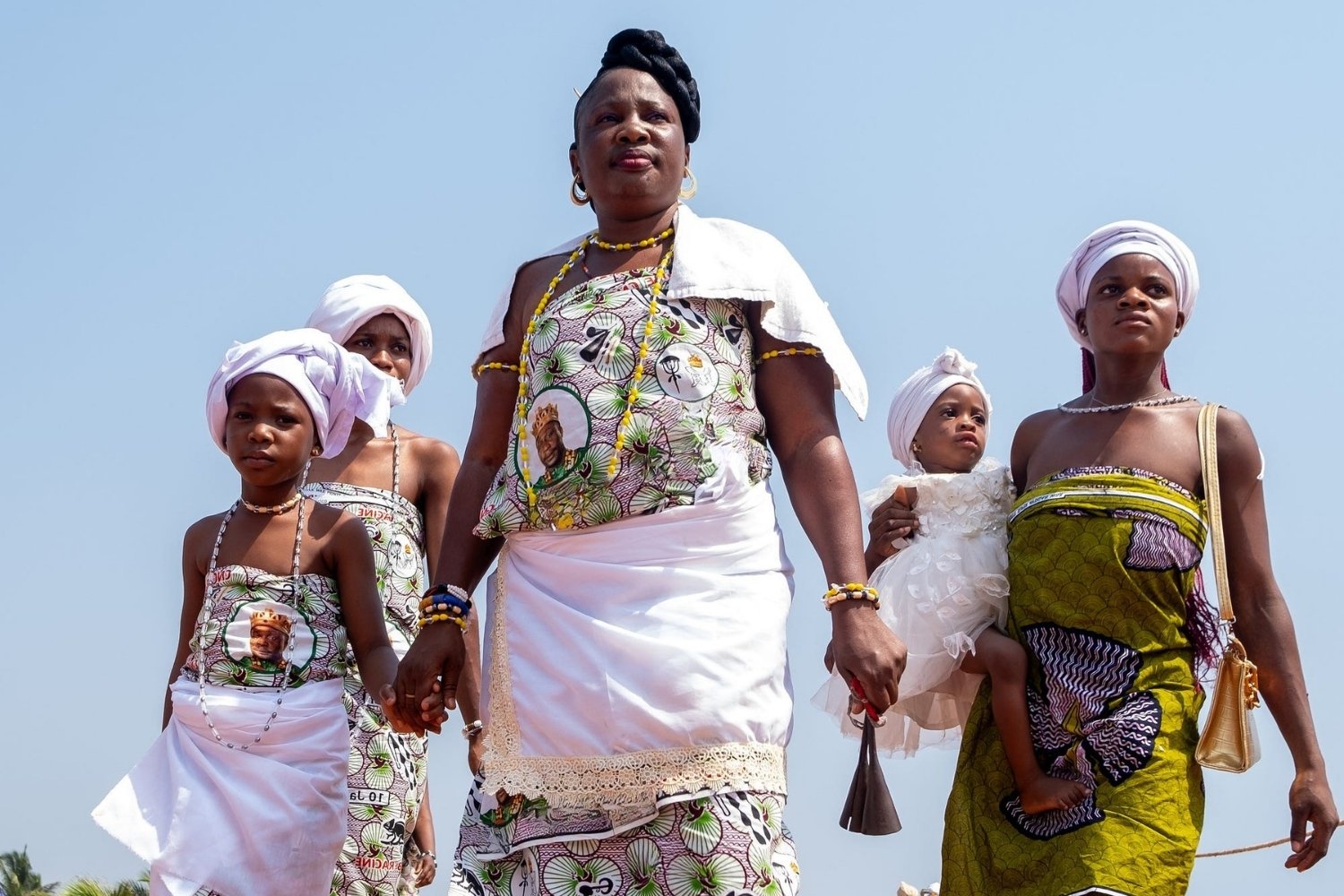
Vodun, often called Voodoo, is a religion with deep roots in West Africa, particularly in countries like Benin and Togo. It's a belief system that combines elements of ancestor worship, animism, and the worship of spirits known as Loa. Despite its portrayal in popular culture, Vodun is a complex and rich tradition practiced by millions. Did you know that Vodun ceremonies often involve music, dance, and rituals to communicate with the spirits? Contrary to popular belief, Vodun is not about dark magic or curses but focuses on healing, community, and harmony with nature. Curious about the real facts behind this misunderstood religion? Let's dive into 28 fascinating aspects of Vodun that will change your perspective.
What is Vodun?
Vodun, often referred to as Voodoo, is a religion with deep roots in West African traditions. It has evolved over centuries, blending with other cultures and beliefs. Let's dive into some fascinating facts about this intriguing religion.
-
Vodun originated in West Africa, particularly in the regions of Benin, Togo, and Ghana.
-
The word "Vodun" means "spirit" in the Fon and Ewe languages of West Africa.
-
Vodun is a polytheistic religion, meaning it worships multiple deities, known as "loas" or "orishas."
-
Each loa has specific attributes, responsibilities, and symbols associated with them.
-
Vodun practitioners believe in a supreme god, often referred to as Bondye or Mawu-Lisa, who is distant and not involved in daily affairs.
Vodun in the Americas
When enslaved Africans were brought to the Americas, they carried their beliefs with them. Vodun adapted and merged with other religious practices, creating unique forms in different regions.
-
Haitian Vodou is one of the most well-known forms of Vodun, blending African, Catholic, and indigenous beliefs.
-
In Louisiana, Vodun evolved into Voodoo, incorporating French, Spanish, and Native American influences.
-
Brazilian Candomblé and Cuban Santería are other examples of Afro-American religions with roots in Vodun.
-
Vodun rituals in the Americas often include drumming, dancing, and singing to invoke the spirits.
-
Vodun altars in the Americas frequently feature Catholic saints, symbolizing the syncretism between Vodun and Christianity.
Rituals and Practices
Vodun rituals are rich in symbolism and tradition. They serve to honor the spirits, seek guidance, and maintain balance in the community.
-
Vodun ceremonies often involve animal sacrifices, which are seen as offerings to the spirits.
-
Practitioners use various objects like dolls, candles, and herbs in their rituals to represent and connect with the spirits.
-
Divination is a common practice in Vodun, using tools like cowrie shells, tarot cards, or bones to communicate with the spirits.
-
Vodun healers, known as houngans (priests) or mambos (priestesses), play a crucial role in the community, offering spiritual and physical healing.
-
Vodun ceremonies can last for hours or even days, involving elaborate preparations and participation from the entire community.
Misconceptions and Stereotypes
Vodun has often been misunderstood and misrepresented, especially in popular culture. These misconceptions have led to negative stereotypes and fear.
-
Contrary to popular belief, Vodun is not about black magic or evil spells.
-
The infamous "voodoo doll" is not a central element of Vodun and is often misrepresented in media.
-
Vodun is a religion of healing, community, and respect for nature and ancestors.
-
Many Vodun practitioners also identify as Christians, blending their traditional beliefs with their faith.
-
Vodun has been recognized as an official religion in countries like Benin and Haiti, highlighting its cultural significance.
Vodun Today
Vodun continues to thrive and evolve, with millions of followers worldwide. It remains an integral part of the cultural and spiritual landscape in many regions.
-
Benin celebrates Vodun Day on January 10th, a national holiday honoring the religion and its traditions.
-
Vodun festivals in Haiti, like the Fête Gede, attract thousands of participants and tourists each year.
-
Modern Vodun practitioners often use social media and online platforms to connect and share their beliefs.
-
Vodun art, music, and dance have influenced various aspects of popular culture, from fashion to film.
-
Vodun has inspired numerous academic studies, exploring its history, practices, and impact on society.
Vodun's Influence on Popular Culture
Vodun's rich traditions and mystique have left a mark on popular culture, inspiring various forms of media and art.
-
Movies like "The Serpent and the Rainbow" and "Live and Let Die" have drawn inspiration from Vodun, though not always accurately.
-
Musicians like Dr. John and the band Arcade Fire have incorporated Vodun themes and imagery into their work.
-
Vodun has also influenced literature, with authors like Zora Neale Hurston and Maya Deren exploring its practices and significance in their writings.
The Final Word on Vodun
Vodun, often misunderstood, is a rich and complex belief system. Rooted in West African traditions, it blends spirituality, community, and nature. Practitioners honor spirits, or loa, through rituals, music, and dance. Far from the dark stereotypes, Vodun emphasizes harmony, respect, and healing. Its influence extends beyond Africa, shaping cultures in the Caribbean and Americas. Understanding Vodun requires an open mind and respect for its depth. It’s not just about rituals; it’s a way of life that connects people to their ancestors and the world around them. Embracing its true essence can dispel myths and foster appreciation for its cultural significance. So next time you hear about Vodun, remember its roots in community, spirituality, and nature. It’s a vibrant tradition that deserves recognition and respect.
Was this page helpful?
Our commitment to delivering trustworthy and engaging content is at the heart of what we do. Each fact on our site is contributed by real users like you, bringing a wealth of diverse insights and information. To ensure the highest standards of accuracy and reliability, our dedicated editors meticulously review each submission. This process guarantees that the facts we share are not only fascinating but also credible. Trust in our commitment to quality and authenticity as you explore and learn with us.
